I woke up bright and early on our first morning in Japan excited to start exploring… only to check the clock and find that it was 11:30pm. Oops. Jetlag. Back to bed.
We rose instead at the more realistic hour of 5:30am, took our time getting ready, had breakfast, and caught the metro to Asakusa, on the east side of Tokyo.
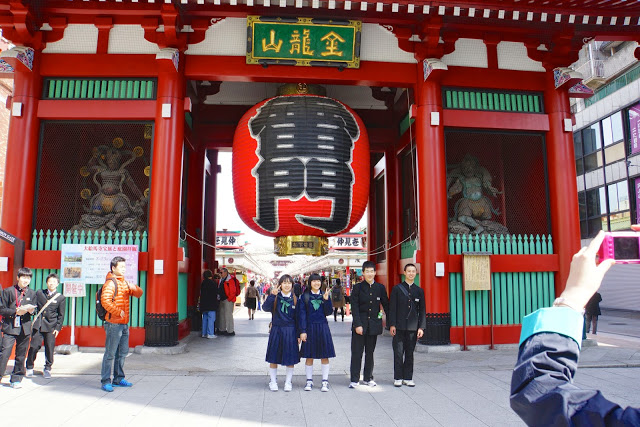
Asakusa is home to Sensoji temple, a Buddhist temple that dates to the 600s. It’s a major attraction; to find it, we just followed the crowds from the metro station!
After passing through the enormous gate, you’ll walk down the short, narrow street that leads to the temple. It’s lined with stalls selling souvenirs and traditional snacks.
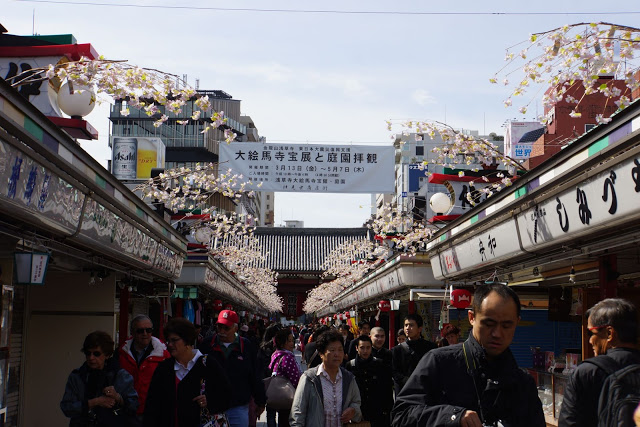
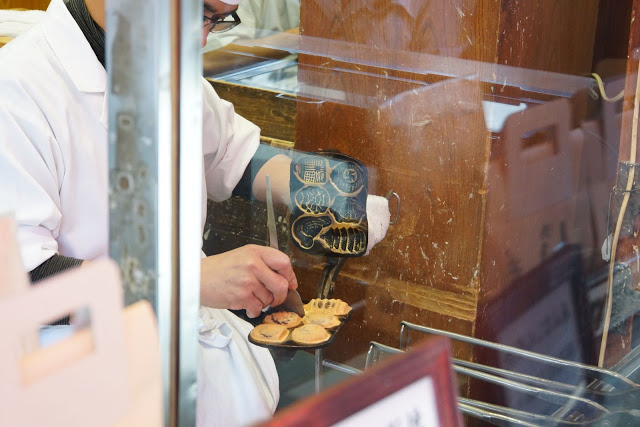
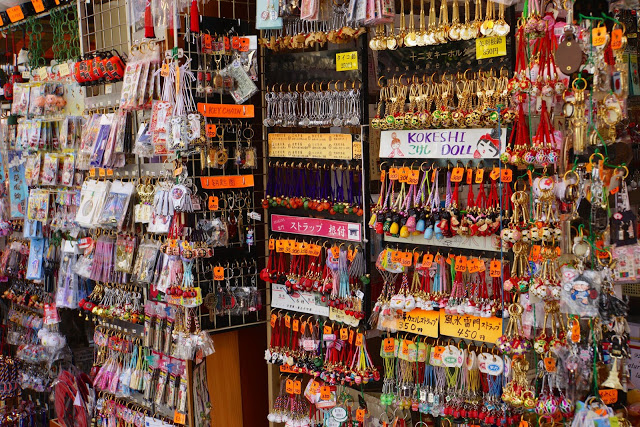
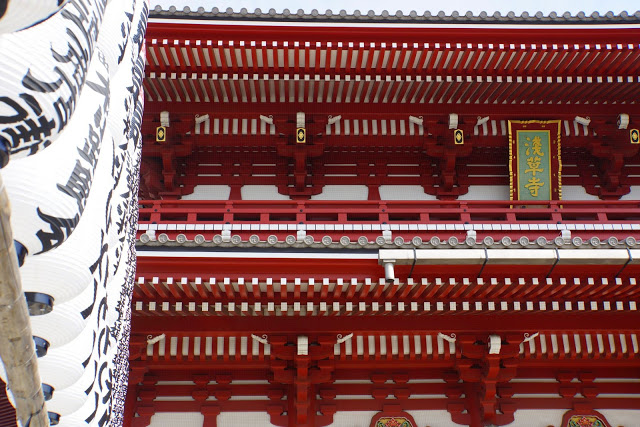
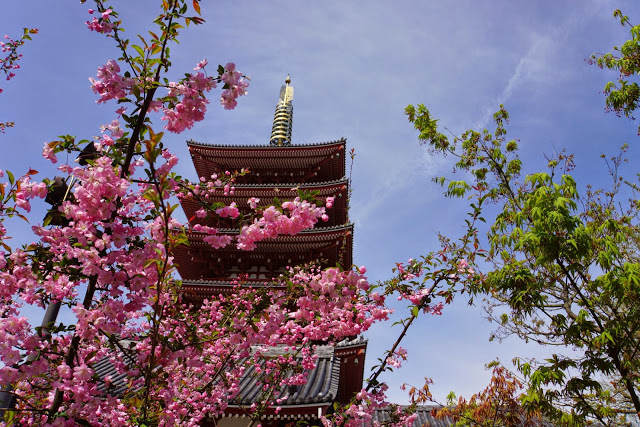
There’s a fair amount to see – the temple itself and the pagoda, gardens, and of course the little stalls and shops. I found it especially interesting to see the Tokyo Skytree in juxtaposition to Sensoji, old and new together.
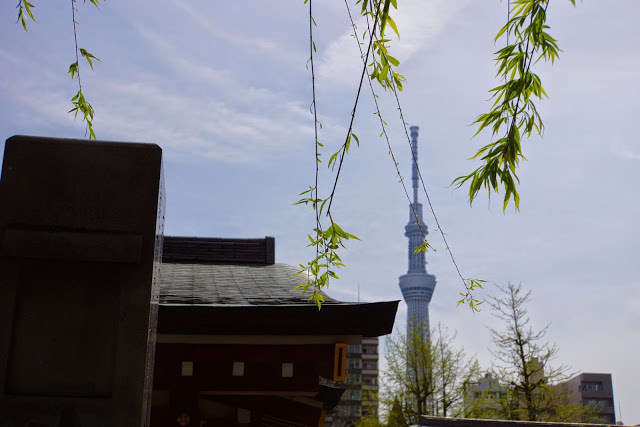
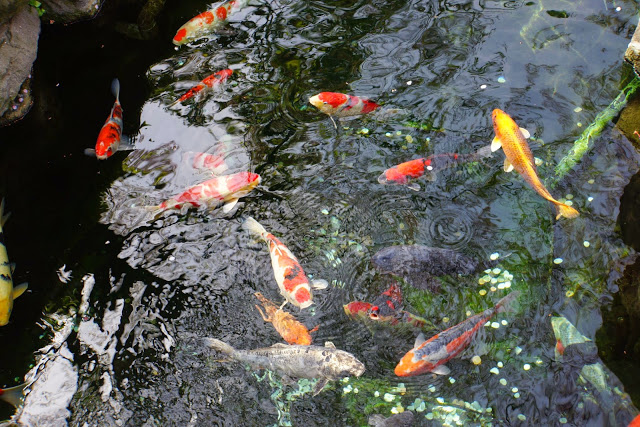
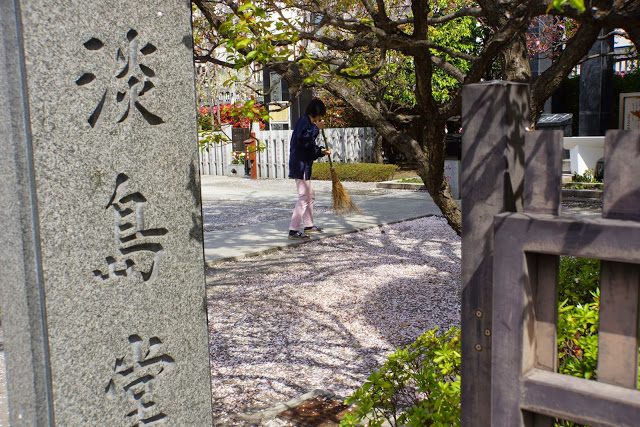
After leaving Sensoji, we walked about 15 minutes to the Kappabashi “kitchen street”, home to all sorts of interesting restaurant supply shops. Looking for a very high end Japanese knife? Some (surprisingly pricey) plastic food models? Giant stock pots? It’s all here, along with everything from restaurant chairs and order pads to antique plates and glassware.
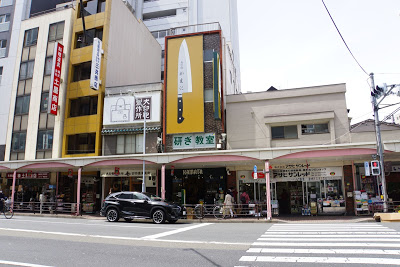

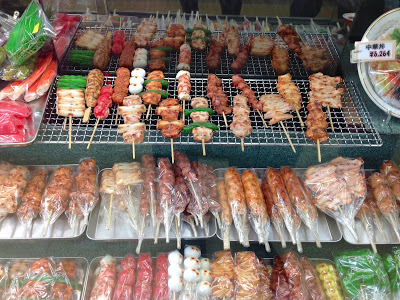
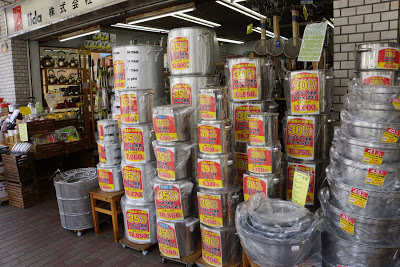
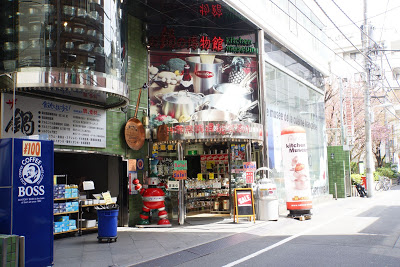
For lunch, we hopped back on the Ginza line and went to Kanda Yabu Soba, a venerable shop that originally dated from 1880. It burned down a few years ago, but was then rebuilt in an old-fashioned style that looks almost like the original. It remains a popular place, and we waited in line for about 10 minutes before being seated.


This is not an overly touristy spot – in fact, we found ourselves the object of interest from our neighbors at adjacent tables. One older couple didn’t speak much (any) English, but we managed to communicate through smiles, a few words, and shared photos on our phones. Another couple included a distinguished gentleman who had done business in the US and wanted to hear about how we learned of the restaurant and to tell us a bit of its history.
We flagged down a waitress (it’s more of a fast-casual kind of place than one with formal table service) and placed our orders, which joined the medley of others sing-songed to the kitchen in a warbling chant.
A few important notes on eating soba
First of all, the presentation of noodles is rather deceptive – what you see is a thin layer of noodles just barely covering the bamboo mat beneath (see it peeking through?). Savvier patrons ordered noodles upfront in multiples that came stacked.
In addition to the noodles, you’ll be presented with a small flask of sauce, a bowl for dipping, and a plate with shredded daikon and wasabi. Pour some of the sauce into the bowl and mix in the garnish to your taste – but be careful not to pour too much at first (more on that later).
The proper way to eat your soba is to hold the sauce bowl up in your left hand, dip the noodles into it briefly, then slurp them up!
After you finish your noodles (ordering extra as needed – I had two orders and D had three!), you’ll receive a teapot of hot soba broth to drink from your sauce bowl. It’s starchy and flavorful, and tastes best with just a bit of leftover sauce to flavor it. Add more as needed.
Our final stop was Akihabara, known for electronics and, nowadays, anime culture.
Back in the days when the coolest cutting edge tech gadgets were only-in-Japan, the Yodobashi electronics store must have been a wonderland for American techies. But today there’s nothing there that you can’t find on Amazon. It was still sensory overload to take the escalators all the way to the top and walk around a few of the floors, filled-to-bursting with televisions, flashing video games, tablets, watches, every kind of computer and electrical hardware, cameras, and mundane essentials like batteries, extension cords, lightbulbs, and pens.
I stuck to a few erasable pens (Japan still leads the US in pen innovation!) and then we made one final stop, the Kanda Myojin temple, which is popular as a lucky place for technology and business.
Turns out it is also a temple for anime fans, after it featured as a setting for a popular anime series.
It surprised me to see wooden prayer tablets featuring anime characters at such a traditional shrine, but it’s not such an unusual combination in modern Akihabara, I suppose!
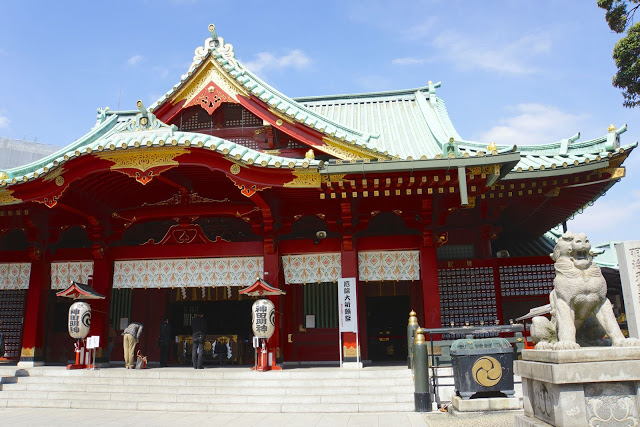
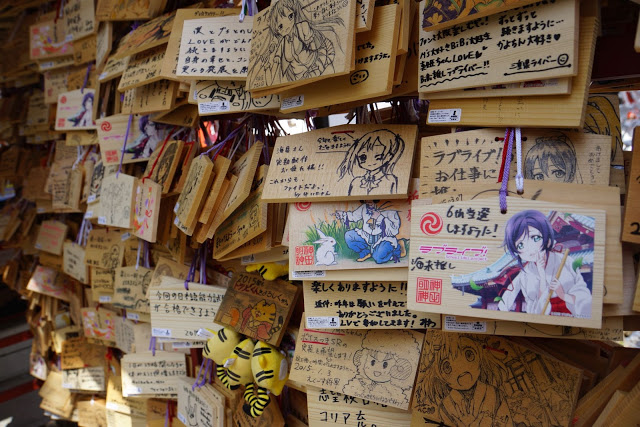
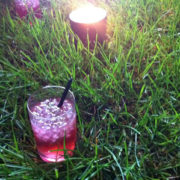 The Aviary
The Aviary Lunch at Solbar, Calistoga CA
Lunch at Solbar, Calistoga CA Almond cake
Almond cake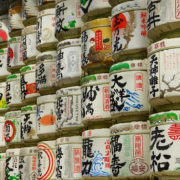 Meiji Shrine and Afuri ramen, Tokyo
Meiji Shrine and Afuri ramen, Tokyo